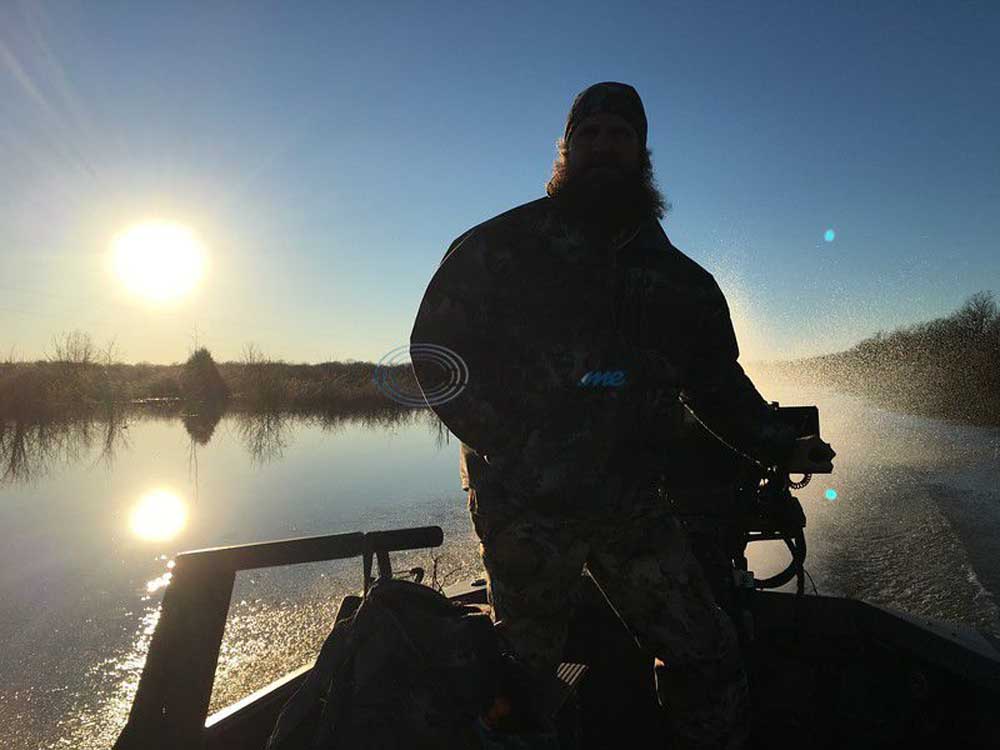Work It Baby; Public vs. Private
Published 1:36 pm Wednesday, January 13, 2016
Ten minutes until time to pull the trigger. Wings whistling around the decoy spread as the faint, light of the morning sun begins to warm the horizon. It’s this moment that makes all the work that went in to the preparation for this season, or this hunt, fade away from memory. Shooting time anxiously arrives and the first volley of the day reminds you about that work and how it has thankfully paid off.
One of the reasons we were selected by Cana Outdoors to be the subject of their duck hunting videography was the success the Dr. Duck team has achieved hunting almost exclusively public waters. Anyone can be driven to a blind, called for, instructed when to shoot and enjoy the morning, throwing countless amounts of steel at incoming birds. Those of us with private property to hunt or who fight the public battles week after week all experience a difficult amount of work, unknown to most of those paying professionals to guide their weekend adventures.
Trending
I have been fortunate to have several private spots over the years and spent a good amount of resources in the off-season researching, building levees to hold water, planting and praying the investment of money, labor and time pay off come the next season and many seasons to come. Historically we would hold these spots until after the split, not hunt after noon and rarely more than once every couple weeks to ensure that any ducks that made it this far south would hang around to lure more birds in from big water and popular roosts. There is a considerable amount of work that goes in to preparing and maintaining such spots and I take my hat off to those that accept that challenge year after year; the rewards can be bountiful.
Public hunters face another kind of work and preparation that for the most part takes place during the season itself.
I believe that the successful public hunter’s work is endless, can be ruthless and is more often over-looked by most. If you watched the Dr. Duck episode one ( http://yeticoolers.com/yeti-videos/dr-duck/ ) you heard @thefowlhunter mention the fact that “you can’t just show up where everyone else is and expect to do great things”. This resonates deep with me, as our work for the next hunt must begin immediately following today’s shoot.
A typical day for us following a hunt, especially when traveling to public WMAs goes something like this: grab lunch and head out. If ducks are in the area great, if not we hit the road and head North. Dock out and start hitting spots. Having any connections in the area we can call is a great thing but not always a possibility. Looking for fresh water lines, listening for ducks, walking sloughs and running rivers. Technology plays a big part; monitoring your iPhone Google map app is a game changer. Once the ducks are located, establishing the X is vital to the next day’s success. When scouting, ducks will hear you coming and will swim. Even if you are able to go stealth on them, they have more than likely moved from where they originally pitched and you have to do the work to figure out where they are comfortable getting down and obviously consideration of the next day’s weather and wind is crucial.
Most areas in Arkansas we hunt have a specific time you can get in the water and another time you can proceed to the hole. It sometimes almost seems like getting in line for your favorite ride at Disney World. More often than not we back up on the ramp, sleep in the truck, dock out at 1AM, wait at the gate until 4AM then quickly advance to the hole via GPS. Then you hope that day’s efforts pay off with an opportunity to work green tops. Win or lose, paying attention to flight birds can pay huge dividends and get you a head start on the next day’s target spot.
Finding and getting the hole is big. In many situations the work isn’t done here as hunters will creep up in to close proximity and calling becomes yet another area of competition.
Trending
Texas doesn’t have the kind of traffic Arkansas experiences so public hunting rules aren’t quite as stringent. Many times, early in the year I will head out the day before the hunt to secure a hole I believe will be fruitful. Late in the season this isn’t quite as necessary as most your early season, less experienced hunters wear down, give up with lack of early season birds and call it quits as the weather finally gets right and the birds begin to appear. Not the true duck hunter. He will choose to battle and I look forward to seeing your results and hearing your stories.
I conclude that the public water hunter naturally has to put more effort in to each days work during the season to ensure success. More importantly, what do you think? Do you have access to private or are you forced to fight the public battle week in and out? Do you fade as the wintery conditions set in or dig deep to find that fourth quarter magic that separates you from the rest of the field? What obstacles do you face on private or public? Please share your thoughts in the comment section below or by reaching out to me on Instagram @dr_duck, FaceBook DR DUCK or on Twitter @dennisloosier (DR_DUCK). Or make it even easier, just post your thoughts or pictures on instagram and tag #drduckTX, I’ll find them. Happy Hunting!




